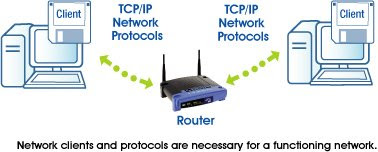There are two kinds of network technologies
1> Wireless - communicates through radio waves
2>Wired - communicates through data cables (most commonly Ethernet-based)
2>Wired - communicates through data cables (most commonly Ethernet-based)
Wireless networks don't use cables for connections, but rather they use radio waves, like cordless phones. The advantage of a wireless network is the mobility and freedom from the restriction of wires or a fixed connection. The benefits of having a wireless network include
Mobility and freedom - work anywhere
No restriction of wires or a fixed connection
Quick, effortless installation
No cables to buy
Save cabling time and hassle
Easy to expand
Also known as Wi-Fi, or Wireless Fidelity, wireless networks allow you to use your network devices anywhere in an office or home, even out on the patio. You can check your e-mail or surf the Internet on your laptop anywhere in your house. There is no need to drill holes in the wall and install Ethernet cables. You can network anywhere - without wires. Outside your home, wireless networking is available in public "hotspots," such as coffee shops, businesses, hotel rooms, and airports. This is perfect for those of you who do a lot of traveling.
Why choose a wired network?
Wired networks have been around for decades. Wired networking technology found today is known as Ethernet. The data cables, known as Ethernet network cables or wired (CAT5) cables, connect computers and other devices that make up the networks. Wired networks are best when you need to move large amounts of data at high speeds, such as professional-quality multimedia. The benefits of having a wired network include
Relatively low cost
Offers the highest performance possible
Faster speed - standard Ethernet cable up to 100Mbps.
Offers the highest performance possible
Faster speed - standard Ethernet cable up to 100Mbps.




